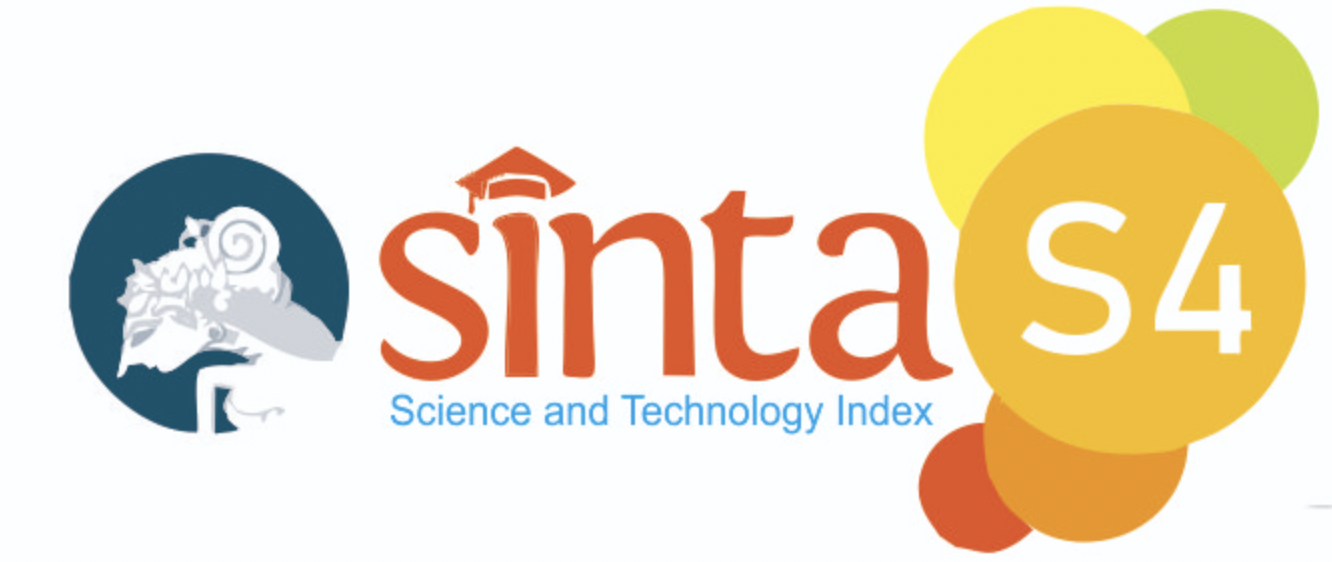Abstract
Pregnant women tend to be more concern with the health and food issue. During pregnancy, women will have physiological changes, such as intestinal disorders, metabolic diseases, and obesity. They tend to reduce consume of food with pregnancy-related health risk. In order to achieve a healthy pregnancy, information related to health and food issue are needed. Pregnant women were actively seek information from a variety of sources. The research method used is literature review, we would like to identify which source of information that most used by pregnant to meet their information need and how is their belief about the sources. The conclusion of this study that information required by pregnant women related with information regarding medicine or medication use in pregnancy, nutrition, and health disorders. Dominant information used by pregnant women were health practitioners, online information, and family/friends. Although used by many pregnant women, the internet believed as an unreliable source of health information. Health practitioners were the main trusted information sources. This study is essential for information provider in designing healthy living information and educating health literacy for pregnant women.
References
- Ariadne, L., Barnes, J., Barclay, L., Mccaffery, K., & Aslani, P. (2018). Complementary medicine products used in pregnancy and lactation and an examination of the information sources accessed pertaining to maternal health literacy: a systematic review of qualitative studies. BMC Complementary and Alternative Medicine, 18(1), 1–27. https://doi.org/10.1186/s12906-018-2283-9
- Bianchi, C. M., Huneau, J. F., Le Goff, G., Verger, E. O., Mariotti, F., & Gurviez, P. (2016). Concerns, attitudes, beliefs and information seeking practices with respect to nutrition-related issues: A qualitative study in French pregnant women. BMC Pregnancy and Childbirth, 16(1), 1–14. https://doi.org/10.1186/s12884-016-1078-6
- Carlsson, T., Bergman, G., Marttala, U. M., Wadensten, B., & Mattsson, E. (2015). Information following a Diagnosis of Congenital Heart Defect: Experiences among Parents to Prenatally Diagnosed Children. PLoS ONE, 1–12. https://doi.org/10.1371/journal.pone.0117995
- Çakar, M., Tari Kasnakoglu, B., Ökem, Z. G., Okuducu, Ü., & Beksaç, M. S. (2016). The effect of different information sources on the anxiety level of pregnant women who underwent invasive prenatal testing. The Journal of Maternal-Fetal & Neonatal Medicine, 29(23), 3843–3847. https://doi.org/10.3109/14767058.2016.1149560
- Chabert, M. C., Perrin, J., Berbis, J., Bretelle, F., Adnot, S., & Courbiere, B. (2016). Lack of information received by a French female cohort regarding prevention against exposure to reprotoxic agents during pregnancy. European Journal of Obstetrics Gynecology and Reproductive Biology, 205, 15–20. https://doi.org/10.1016/j.ejogrb.2016.07.504
- Chan, M.-P. S., Farhadloo, M., Winneg, K., Jamieson, K. H., & Albarracin, D. (2018). Sources affecting knowledge and behavior responses to the Zika virus in US households with current pregnancy, intended pregnancy and a high probability of unintended pregnancy. Journal of Public Health, (June), 1–11. https://doi.org/10.1093/pubmed/fdy085
- Crawford-williams, F., Steen, M., Esterman, A., Fielder, A., & Mikocka-walus, A. (2015). “My midwife said that having a glass of red wine was actually better for the baby”: a focus group study of women and their partner’s knowledge and experiences relating to alcohol consumption in pregnancy. BMC Pregnancy and Childbirth, 15(79), 1–11. https://doi.org/10.1186/s12884-015-0506-3
- Criss, S., Oken, E., Guthrie, L., & Hivert, M.-F. (2016). A qualitative study of gestational weight gain goal setting. BMC Pregnancy and Childbirth, 16(1), 317. https://doi.org/10.1186/s12884-016-1118-2
- Denney, A. S., Tewksbury, R., Denney, A. S., & Tewksbury, R. (2013). How to Write a Literature Review How to Write a Literature Review. Journal of Criminal Justice Education, 24(1), 218–234. https://doi.org/10.1080/10511253.2012.730617
- Fabry, P., Gagneur, A., & Pasquier, J. C. (2011). Determinants of A (H1N1) vaccination: Cross-sectional study in a population of pregnant women in Quebec. Vaccine, 29(9), 1824–1829. https://doi.org/10.1016/j.vaccine.2010.12.109
- Friedrich, L., Sruk, A., & Bielen, I. (2018). Women with epilepsy in childbearing age: Pregnancy-related knowledge, information sources, and antiepileptic drugs. Epilepsy and Behavior, 80, 122–128. https://doi.org/10.1016/j.yebeh.2018.01.002
- Grimes, H. A., Forster, D. A., & Newton, M. S. (2014). Sources of information used by women during pregnancy to meet their information needs. Midwifery, 30(2014), e26-e33. https://doi.org/10.1016/j.midw.2013.10.007
- Hämeen-anttila, K., Nordeng, H., Kokki, E., Jyrkkä, J., Lupattelli, A., Kirti, V., & Enlund, H. (2014). Multiple information sources and consequences of conflicting information about medicine use during pregnancy: A multinational corresponding author. Journal of Medical Internet Research, 16(2), 1–11. https://doi.org/10.2196/jmir.2939
- Hansen, C., Interrante, J. D., Ailes, E. C., Frey, M. T., Broussard, C. S., Godoshian, V. J., … Gilboa, S. M. (2016). Assessment of YouTube videos as a source of information on medication use in pregnancy. Pharmacoepidemiology and Drug Safety, 25, 35–44. https://doi.org/10.1002/pds
- Kamali, S., Ahmadian, L., Khajouei, R., & Bahaadinbeigy, K. (2018). Health information needs of pregnant women: information sources, motives and barriers. Health Information and Libraries Journal, 35(1), 24–37. https://doi.org/10.1111/hir.12200
- Khooshehchin T.E., Keshavarz Z., Afrakhteh M., Shakibazadeh E., F. S. (2017). Perceived needs in women with gestational diabetes: A qualitative study. Electronic Physician, 8(12), 3412–3420. https://doi.org/10.14661/2015.971-976
- Lee, A., Belski, R., Radcliffe, J., & Newton, M. (2016). What do pregnant women know about the healthy eating guidelines for pregnancy? A web-based questionnaire. Maternal and Child Health Journal, 20(10), 2179–2188. https://doi.org/10.1007/s10995-016-2071-4
- Lee, S., Holden, D., & Ayers, S. (2016). How women with high-risk pregnancies use lay information when considering place of birth: A qualitative study. Women and Birth, 29(1), e13–e17. https://doi.org/10.1016/j.wombi.2015.07.010
- Nosrat, S. B., Sedehi, M., & Golalipour, M. J. (2012). Knowledge and practice of urban Iranian pregnant women towards folic acid intake for neural tube defect prevention. Journal of the Pakistan Medical Association, 62(8), 785–789.
- O’Neill, A. T., Hockey, J., O’Brien, P., Williams, A., Morris, T. P., Khan, T., … Yoong, W. (2017). Knowledge of pelvic floor problems: a study of third trimester, primiparous women. International Urogynecology Journal, 28(1), 125–129. https://doi.org/10.1007/s00192-016-3087-4
- Owusu-addo, S. B., Owusu-addo, E., & Morhe, E. S. K. (2016). Health information-seeking behaviours among pregnant teenagers in Ejisu-Juaben Municipality, Ghana. Midwifery, 41, 110–117. https://doi.org/10.1016/j.midw.2016.08.007
- Palosse-cantaloube, L., Lacroix, I., Rousseau, V., Bagheri, H., Montastruc, J.-L., Damase-Michel, C., … Damasemichel, C. (2014). Analysis of chats on French internet forums about drugs and pregnancy. Pharmacoepidemiology and Drug Safety, 23, 1330–1333. https://doi.org/10.1002/pds
- Radovanovic, P. B., & Kocijancic, M. (2015). How well are pregnant women in Croatia informed about the oral glucose tolerance test?. Biochemia Medica, 25(2), 230–236. https://doi.org/10.11613/BM.2015.023
- Sayakhot, P., & Carolan-Olah, M. (2016). Sources of information on gestational diabetes mellitus, satisfaction with diagnostic process and information provision. BMC Pregnancy and Childbirth, 16(1), 1–9. https://doi.org/10.1186/s12884-016-1067-9
- Szwajcer, E. M., Hiddink, G. J., Koelen, M. A., & van Woerkum, C. M. J. (2005). Nutrition-related information-seeking behaviours before and throughout the course of pregnancy: Consequences for nutrition communication. European Journal of Clinical Nutrition, 59(SUPPL. 1), 57–65. https://doi.org/10.1038/sj.ejcn.1602175
- Ternby, E., Ingvoldstad, C., Anneren, G., Lindgren, P., & Axelsson, O. (2015). Information and knowledge about Down syndrome among women and partners after first trimester combined testing. Acta Obstetricia et Gynecologica Scandinavica, 94, 329–332. https://doi.org/10.1111/aogs.12560
- Wennberg, A. L., Lundqvist, A., Ulf, H., Sandstrom, H., & Hamberg, K. (2013). Women’s experiences of dietary advice and dietary changes during pregnancy. Midwifery, 29, 1027–1034. https://doi.org/10.1016/j.midw.2012.09.005
- Widnes, S. F., & Schjøtt, J. (2017). Risk perception regarding drug use in pregnancy. American Journal of Obstetrics and Gynecology, 216(4), 375–378. https://doi.org/10.1016/j.ajog.2016.12.007
- Willcox, J. C., Campbell, K. J., Mccarthy, E. A., Lappas, M., Ball, K., Crawford, D., … Wilkinson, S. A. (2015). Gestational weight gain information: seeking and sources among pregnant women. BMC Pregnancy and Childbirth, 15(164), 1–10. https://doi.org/10.1186/s12884-015-0600-6
- Wotherspoon, A. C., Young, I. S., McCance, D. R., & Holmes, V. A. (2017). Exploring knowledge of pre-eclampsia and views on a potential screening test in women with type 1 diabetes. Midwifery, 50, 99–105. https://doi.org/10.1016/j.midw.2017.03.019
- Yamamoto, S., & Wada, Y. (2018). Awareness, use and information sources of folic acid supplementation to prevent neural tube defects in pregnant Japanese women. Public Health Nutrition, 21(4), 732–739. https://doi.org/10.1017/S1368980017003172
Recommended Citation
Marlina, Ekawati; Kusumaningrum, Dwiatri; and Yudhanto, Seno
(2018)
"Where Does the Pregnant Women Searching for Their Information Need?,"
Jurnal Ilmu Informasi, Perpustakaan dan Kearsipan: Vol. 20:
No.
2, Article 6.
DOI: 10.7454/JIPK.v20i2.006
Available at:
https://scholarhub.ui.ac.id/jipk/vol20/iss2/6
Included in
Archival Science Commons, Collection Development and Management Commons, Information Literacy Commons







